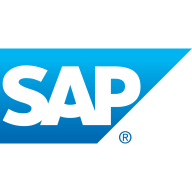

Find out in this report how the two Business-to-Business Middleware solutions compare in terms of features, pricing, service and support, easy of deployment, and ROI.
| Product | Market Share (%) |
|---|---|
| SAP Process Orchestration | 6.4% |
| IBM Sterling B2B Integration Services | 15.1% |
| webMethods.io | 11.9% |
| Other | 66.6% |
| Product | Market Share (%) |
|---|---|
| SSIS | 5.7% |
| Informatica PowerCenter | 6.0% |
| Azure Data Factory | 5.2% |
| Other | 83.1% |


| Company Size | Count |
|---|---|
| Small Business | 8 |
| Midsize Enterprise | 3 |
| Large Enterprise | 26 |
| Company Size | Count |
|---|---|
| Small Business | 26 |
| Midsize Enterprise | 19 |
| Large Enterprise | 57 |
SSIS is a versatile tool for data integration tasks like ETL processes, data migration, and real-time data processing. Users appreciate its ease of use, data transformation tools, scheduling capabilities, and extensive connectivity options. It enhances productivity and efficiency within organizations by streamlining data-related processes and improving data quality and consistency.
We monitor all Business-to-Business Middleware reviews to prevent fraudulent reviews and keep review quality high. We do not post reviews by company employees or direct competitors. We validate each review for authenticity via cross-reference with LinkedIn, and personal follow-up with the reviewer when necessary.